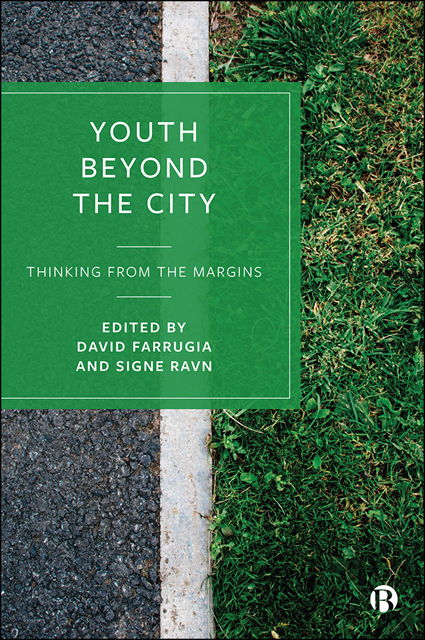Book contents
- Frontmatter
- Contents
- List of Figures and Tables
- Notes on Contributors
- Introduction: Thinking from the Margins
- Part I Inequalities: Education and Aspiration on the Margins
- Part II Materialities: Spatiality and Sensory Embodiment
- Part III Identities: Mobility, Rootedness and Belonging
- Part IV Temporalities: Historicizing Space and Place
- Index
1 - Peripheries within the City: The Role of Place/Space in Shaping Youth Educational Choices and Transitions
Published online by Cambridge University Press: 13 October 2022
- Frontmatter
- Contents
- List of Figures and Tables
- Notes on Contributors
- Introduction: Thinking from the Margins
- Part I Inequalities: Education and Aspiration on the Margins
- Part II Materialities: Spatiality and Sensory Embodiment
- Part III Identities: Mobility, Rootedness and Belonging
- Part IV Temporalities: Historicizing Space and Place
- Index
Summary
Introduction
Youth educational choices and transitions are socially embedded processes that reflect young people's classed, gendered and ethnically informed identities and constrictions (Ball et al, 2000; Archer et al, 2007; Tarabini and Ingram, 2018). As so, they also entail a geographical dimension within which ‘spatial horizons’ and aspirations are created (Evans, 2016). Place and space have been signalled extensively as crucial elements in featuring young people's identity, agency and sense of self (Hall et al, 2009).
In spite of that, a spatially nuanced understanding of young people's transitions and choices is still missing (Donnelly and Gamsu, 2018). As Raffo (2011) argues, even if this dimension is increasingly acknowledged by the literature, there continues to be a clear need for further elaboration of the key ideas associated with the ‘spatial turn’ in education. Simultaneously, specialists in the field of youth studies (Farrugia, 2015; Cuzzocrea, 2019) argue that even as spatial and mobility perspectives have gradually been incorporated to better understand childhood and youth in the contemporary era, there is still a need to reinforce ‘spatial reflexivity’ (Cairns, 2014) in order to systematically integrate these perspectives into the study of young people's transitions and lives.
We argue that what is mostly missing in the literature is an understanding of how places and spaces are lived in and experienced by young people, thus generating meanings for their educational transitions and choices. What does it mean for young people's educational choices to live in one place or another? How do specific places generate opportunities, constraints, representations and meanings for young people to manage their educational transitions? How do these places/ spaces generate a particular perception of the self, of others and of the educational opportunities and trajectories available to them? In essence, how do the dynamics of urban inequality interact with other sources of social inequality and mediate young people's educational experiences, transitions and choices?
The objective of this chapter is to critically reflect on the role of geography and particularly on the place/ space equation in shaping youth educational choices and transitions.
- Type
- Chapter
- Information
- Youth beyond the CityThinking from the Margins, pp. 21 - 39Publisher: Bristol University PressPrint publication year: 2022
- 1
- Cited by



